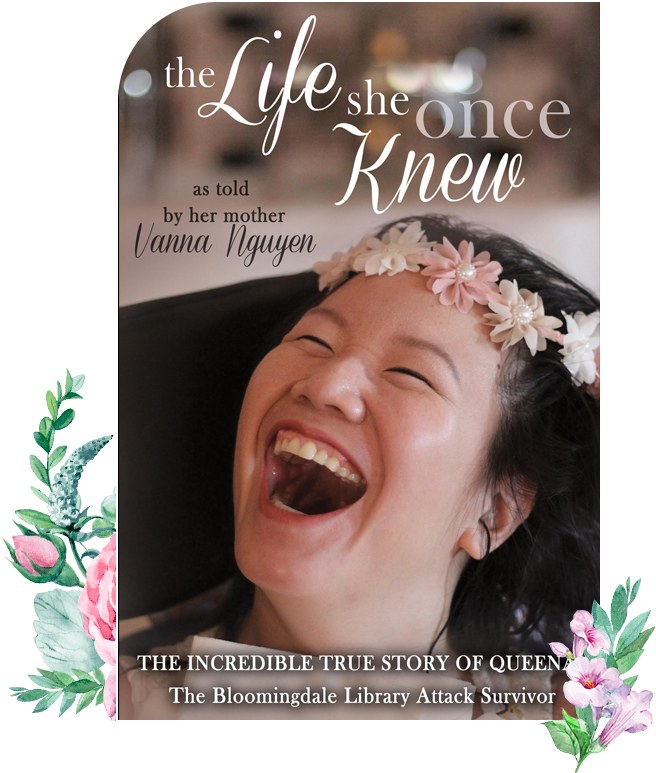GOOD NEWS! As with all previous brain pictures the latest one continues to show improvement. Caryn McDemott accompanied Vanna and Queena to her recent Brain Mapping appointment and this is what was discovered…
First, there is “a lot of reorganization of the brain.” This means, Queena’s brain continues to seek ways to compensate for damages and continues to strengthen areas that can take over for damaged parts. Queena’s original brain pictures show many “blue” areas. These are areas of inactivity. Current pictures show the blue areas mostly gone and replaced with more red areas. Red is good because it shows more activity. As reported by the family and also staff, Queena’s understanding of speech continues to improve. Her ability to notice and attend to other people similarly shows growth. The doctor noted more efforts by Queena to attempt to make eye contact and noted her social interaction continues to improve.
Vanna mentioned that her daughter continues to struggle with frustration and spasms. This means when Queena is trying hard to accomplish a physical task and she can’t do it, she can become “frozen” or “lock-jawed” in efforts to be successful. Her frustration is causing more inability to move forward because she is frustrated and “locks up.” Dr. Lambos calls this “spasticity” meaning she experiences muscle spasms that appear to “lock her up” the harder she tries. In other words, her frustration is somewhat hindering her improvements.
Dr. Lambos says the key is for Queena to understand how to calm down the frustration. Dr. Lambos demonstrated a five second response that he wants Q to use. First, count slowly to five in-taking breath and using five fingers to count. Then, count slowly to five releasing breath, again counting on fingers. When Queena is frustrated she shouldn’t try harder. This is the natural reaction, and what Q is trying to do which leads to more frustration. INSTEAD,Q should try the slow breath exercise to calm down. Queena can’t accomplish physical actions when she is frustrated and tense. She mustfirst learn how to calm herself down so her muscles don’t spasm and freeze her up.
Caryn asked Dr. Lambos if he had ever explained this directly to Queena. He said the therapist talks to her mainly, though he has a good bonding with Queena. Caryn suggested that it might be helpful to Queena to hear Dr. Lambos’ explanation of why the therapists are doing what they do and why. Queena is very smart, and Caryn believes if she hears the overview from the doctor, it will help her get the big picture as to why she needs to do things like take the five second breather in order to return to a physical task. Dr. Lambos very kindly agreed to work personally with Queena for the next two sessions and talk her through the therapies.
Dr. Lambos recommends that instead of the current 60 minute therapies, Queena should try five 30 minute peripheral bio feedback sessions. The 30 minute therapies will give Q the same benefit as the longer sessions, because she will not need to be hooked up to the machine.
In summary and current recommendations, based on reported spasticity and frustration Queena is experiencing, the family was encouraged to point toward switching to the musculature therapies for five sessions (peripheral bio feedback sessions). These work to calm and relax the peripheral muscles, the large muscles, such as arms, shoulders, etc. If this (together with the breathing exercises) does help and reduce the spasticity as hoped, the family can consider more bio feedback. For right now, the musculature area seems to be where Q should focus, at least for these next five sessions. If after the five trial sessions Queena seems more relaxed and more calm; maybe then the family can talk about doing some more.
Keep up the good work, Q! We see strides each and every day! YOU CAN DO IT!



